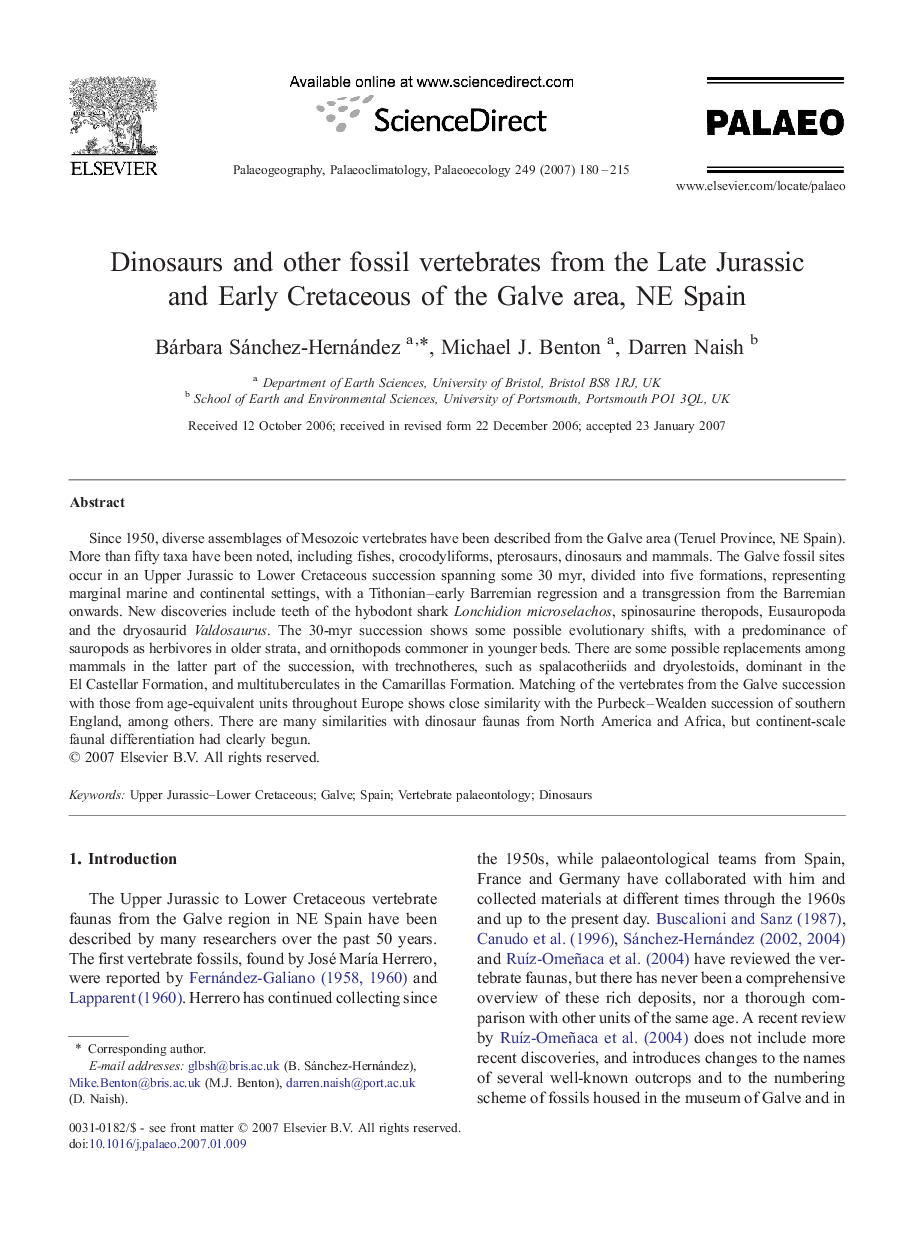| Article ID | Journal | Published Year | Pages | File Type |
|---|---|---|---|---|
| 4469099 | Palaeogeography, Palaeoclimatology, Palaeoecology | 2007 | 36 Pages |
Since 1950, diverse assemblages of Mesozoic vertebrates have been described from the Galve area (Teruel Province, NE Spain). More than fifty taxa have been noted, including fishes, crocodyliforms, pterosaurs, dinosaurs and mammals. The Galve fossil sites occur in an Upper Jurassic to Lower Cretaceous succession spanning some 30 myr, divided into five formations, representing marginal marine and continental settings, with a Tithonian–early Barremian regression and a transgression from the Barremian onwards. New discoveries include teeth of the hybodont shark Lonchidion microselachos, spinosaurine theropods, Eusauropoda and the dryosaurid Valdosaurus. The 30-myr succession shows some possible evolutionary shifts, with a predominance of sauropods as herbivores in older strata, and ornithopods commoner in younger beds. There are some possible replacements among mammals in the latter part of the succession, with trechnotheres, such as spalacotheriids and dryolestoids, dominant in the El Castellar Formation, and multituberculates in the Camarillas Formation. Matching of the vertebrates from the Galve succession with those from age-equivalent units throughout Europe shows close similarity with the Purbeck–Wealden succession of southern England, among others. There are many similarities with dinosaur faunas from North America and Africa, but continent-scale faunal differentiation had clearly begun.
